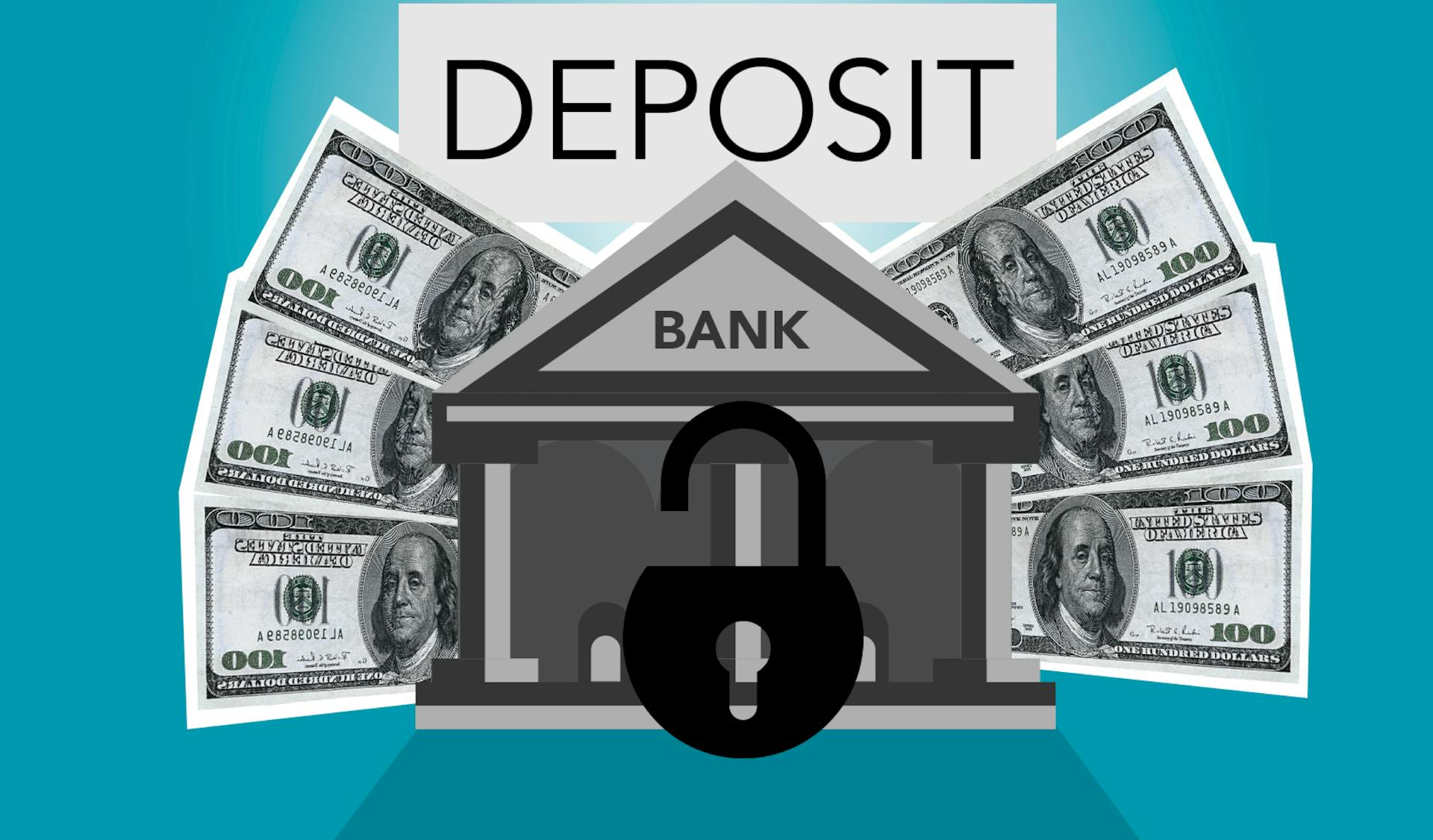
If you're researching Freedman's Savings Bank, you're likely looking for information on its history and operations. The bank was established in 1865 to provide financial services to newly freed slaves.
Freedman's Savings Bank was a unique institution that catered to the financial needs of African Americans during the Reconstruction era. It was chartered by the U.S. government and was designed to promote economic self-sufficiency among freed slaves.
To access the bank's records, you can visit the National Archives and Records Administration (NARA) in Washington, D.C. NARA has a collection of Freedman's Savings Bank records that date back to the 1860s.
History of the Bank
The Freedman's Savings Bank was established to help alleviate the socio-economic conditions of newly freed slaves.
The bank was created by the U.S. Congress, which passed an act of incorporation and a charter for the Freedman's Saving and Trust Company, signed into law by President Abraham Lincoln on March 3, 1865.
The bank's founder, John W. Alvord, was inspired by the success of existing military savings banks.
These military banks were created during the Civil War to collect the wages of Black soldiers, with the first one established in Beaufort, South Carolina, in 1864 by General Rufus Saxton.
Many former slaves were liberated by the Union Army and were paid to join the army, earning a little cash from their enrollment and participation.
The Freedman's Bank became the first banking entity to include them, with most accounts holding between $5 and $50.
From 1865 to 1868, the expansion of the Freedman's Bank was largely driven by the money collected from Black soldiers.
By 1866, the bank had established 19 branches in 12 states, mainly in the South, with the first branch opening in Baltimore, Maryland.
The national headquarters was shifted to Washington, D.C. in 1867.
Financial Issues
Depositors who had their money in the Freedman's Savings Bank during its collapse in 1874 faced significant financial losses. Many depositors never received their deposits back, with some even selling their claims at steep discounts.
The value of assets was lower than registered in the bank books, with liquid assets, cash, and government securities amounting to less than 2% of the bank's total liabilities. This made it difficult for depositors to get their money back.
In 1881, an account holder at the New Orleans branch settled his $352 deposit for just $28.16. This is a stark example of how much depositors lost.
Depositors had to mail their passbooks to Washington to submit their claim, but many were reluctant to do so due to a lack of faith in the bank. Others faced legal challenges in proving their identities or their relationship to depositors who had died.
The repayments came late, leaving cash-poor depositors stranded. Not until November 1875 did the bank start payouts, and even then, many depositors didn't receive their full deposits.
Only 49% of eligible depositors requested a payment when the first payout announcement was made, and these were largely claims from the wealthier depositors. Small account holders collected little to no funds.
Bank Records
The bank records of the Freedman's Savings Bank are a treasure trove of information for genealogists and historians. These records include the account number, name of depositor, date of entry, and other details such as place born, residence, age, and occupation.
The records are organized in a specific way, with the registers arranged alphabetically by state, and then by city within each state. This makes it easier to find the records you're looking for.
If you're having trouble finding the records you need, try searching for the name by surname only, given name only, or with a variant spelling. You can also try searching for the names of relatives and kin, as their records may mention your ancestor.
Here are some online resources you can use to access the records:
- United States, Freedman's Bank Records, 1865-1874, Heritage Quest Online index & images
- Ancestry index & images
- Compact disc index
Note that some of the records may have missing or out-of-order numbers, so be patient and persistent in your search!
How to Use Records
If you're trying to find information about your ancestors in the Freedman's Bank records, you'll first need to find the name in an index. Use either the United States, Freedman's Bank Records, 1865-1874, Heritage Quest Online index & images or Ancestry index & images, or compact disc index.
It's usually best to enter a simple search phrase such as a name only, no date, places, or other limiting factors. This will give you a good starting point to work from. If there are too many matches, add an additional piece of data and then repeat the search.
Try searching for the name by surname only, given name only, or with a variant spelling. You can also look for the names of relatives and kin in the indexes, hoping their records will mention your ancestor. Keep in mind that after the Civil War, newly freed African American families sometimes changed their surnames several times.
If you're unable to find the person you're looking for, don't give up! Try searching online for images of the record, which may be available to view for details about ancestors. It may also be worth considering a trip to the National Archives to view the un-microfilmed portion of the Freedman's Savings and Trust Company records.
If the ancestor or his relatives are not in Freedman's Bank record indexes, there are other sources you can try. Here are a few options:
- Freedmen's Bureau Records
- 1870 US Federal Census at FamilySearch and Ancestry($)
- Civil War Soldiers and Sailors (U.S. Colored Troops)
- Southern Claims Commission records
Record Content
The record content of the Freedman's Savings and Trust Company is a treasure trove of information for genealogists and researchers.
Records include the account number, name of depositor, date of entry, and may include the place born, place brought up, residence, age, complexion, name of employer or occupation, wife or husband, children, father, mother, brothers and sisters, remarks, and signature.
Some early books also contain the name of the former slaveholder and the name of the plantation, which can provide valuable context for understanding the historical context of the records.
The registers are arranged alphabetically by name of state, and the entries are arranged alphabetically by name of city where the bank was located, with each entry then listed chronologically by date when the account was established and numerically by account number.
However, it's worth noting that many numbers are missing, a few are out of numerical order, and in some cases blocks of numbers were not used.
Here's a breakdown of the information typically included in the records:
In some cases, copies of death certificates have been pinned to the entries, providing additional information about the depositor's life and circumstances.
Bank Information
Freedman's Savings Bank was a unique institution that catered to the financial needs of African Americans during the mid-19th century.
Its first branch opened in 1865 in New York City, and by 1869, the bank had expanded to 25 branches across the country.
The bank was established to help African Americans save money and access financial services that were previously unavailable to them.
Contents

The contents of a bank information article can be overwhelming, but let's break it down to the essentials. Here's what you need to know.
We'll start with the basics, and that's where the "Contents" section comes in. This section outlines the different parts of the article, making it easier to navigate.
The article is divided into several sections, including Online Databases and Resources, Introduction, Value, Jurisdictions, How to Use the Records, Availability - National Archives, and Related Websites.
If you're looking for specific information, you can check out the section on Online Databases and Resources, which lists the various resources available.
Here are some specific resources mentioned in the article:
- Letters Received by the Commissioners, Part 1: Correspondence, Loans, and Bank Books, 1870-1914
- Registers of signatures of depositors in branches of the Freedman's Savings and Trust Company, 1865-1874
These resources are digitized and available online, making it easier to access the information you need.
Jurisdictions
The registers covering 1864 to 1871 are available in 29 out of 37 branches.
You can search the computerized indexes without knowing a depositor's residence, making it easier to find the information you need.
The District of Columbia is one jurisdiction that is covered by these records.
Frequently Asked Questions
How much money was in the Freedman's bank?
The Freedman's Savings Bank held assets worth approximately $80 million in 2021 dollars at its peak. This significant amount was accumulated from over 67,000 depositors across 17 states and Washington DC.
What made the failure of the Freedman's savings and Trust Company in 1874 so tragic?
The failure of the Freedman's Savings and Trust Company in 1874 was tragic because it devastated the financial lives of black farmers, charities, and small businesses who relied on it. The bank's collapse was particularly devastating to vulnerable communities who had entrusted their savings to it.
What are the short and long term consequences of Freedman's bank's failure?
The failure of the Freedman's Bank led to a significant financial loss for its depositors, causing a deep-seated distrust of banks among African Americans. This event had lasting consequences, shaping their financial behaviors and perceptions for generations to come.
Sources
- https://en.wikipedia.org/wiki/Freedman%27s_Savings_Bank
- https://www.occ.treas.gov/about/who-we-are/history/1863-1865/1863-1865-freedmans-savings-bank.html
- https://civilwar-history.fandom.com/wiki/Freedman%27s_Savings_Bank
- https://www.familysearch.org/en/wiki/African_American_Freedman%27s_Savings_and_Trust_Company_Records
- https://libertystreeteconomics.newyorkfed.org/2017/02/historical-echoes-the-legacy-of-freedmans-savings-trust/
Featured Images: pexels.com


